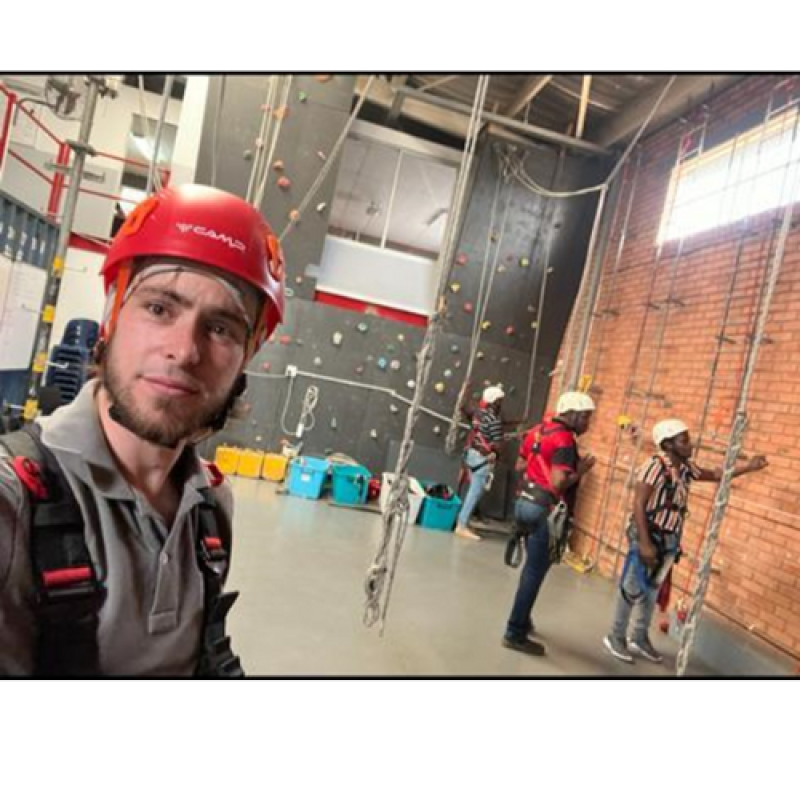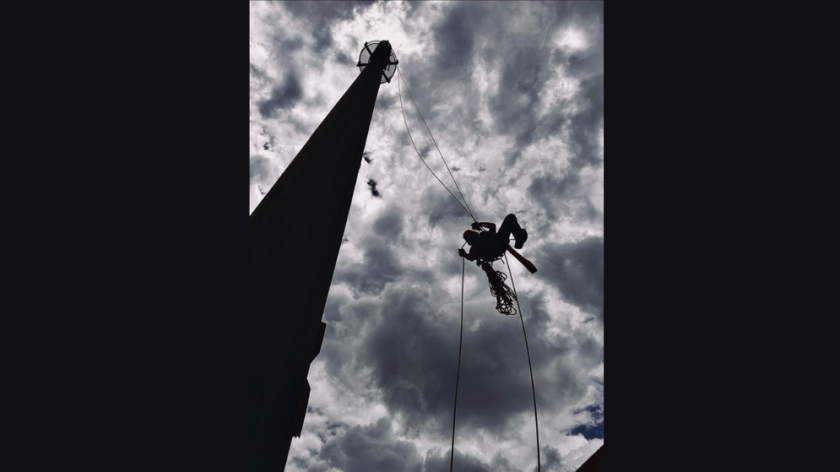TowerXchange has been highlighting the people behind the telecom tower sector for more than a decade. Recently we've been giving more prominence to tower safety and work at height. Here we speak with someone far away from the board room, Ruan Crouse, a trainer with Gravity Training. He’s worked there since he was 21 years old. Gravity is a South African training company that supply’s working at height training for a range of industries across construction.
A typical working at height training course
Ruan’s passion and dedication to what he does shines through as he explains his routine for a typical training course.
“I’ll receive a calendar invite with all of the information for the following days course, so I can start mentally preparing the night before,” he says.
Ruan and his girlfriend get an early night and then head to work together for around 6.30am. His day begins by making sure all of the equipment and paperwork he needs to run a course are laid out exactly as he likes it.
After a brief team meeting with the other trainers, he’ll head to the front desk to meet his group for the day and lead them into the theory classroom.
“I always start off with an icebreaker, and I won’t start until I’ve seen everyone in the room laugh at least once,” he explains. “Then I’ll get them to get to know each other, because I know the course is more beneficial when you have everyone motivated and working as a team.”

Ruan also uses this opportunity to subtly assess the group and see who might need some extra help, or need elements translated into Zulu if their English isn't strong. He also needs to use this time to warm the group up to him, and demonstrate he is an expert.
“I’m only 27 years old, and some people come in with the attitude that they’ve been climbing since before I was born, and what can I teach them? These kinds of people are the hardest to train. But I need to remember, and I need them to know, that I practice and teach these safety techniques every day.”
Then it’s into the theory side of the course. Ruan’s an active guy and a self-proclaimed sports fanatic, which is backed-up by his success on the squash court and hockey field. While he prefers the practical elements of the course, he acknowledges the importance of the theory in laying the foundation for the training, which runs until about lunchtime.
After lunch, Ruan leads the group into the practical room. Depending on the job the group need to do, he’ll show them between 4 and 12 different knots, and run through how to use the temporary and permanent lifelines the workers need to stay safe while climbing.

“We have to show them ways they can be safer, but also more efficient. Sometimes these guys are servicing three or four sites a day, and we don’t want them to be mentally and physically exhausted after only their first climb,” Ruan explains.
The second day of a course begins with a theory test, which the trainee’s have the option to study for the evening before, as they take their manuals home with them.
"After the test I tell, them ‘I hope you enjoyed meeting your instructor, but that guy is gone now’,” Ruan says. “I’ll make sure everyone is learning and having fun, and if someone needs me to show them something 10 times, I’ll show them 11."
“But after the test its time for the practical assessment and at this point I can't help anymore. It’s all business, because I need to make sure these guys can do exactly what I’ve showed them, by themselves. If not, there’s no way they will be able to react safely in a real-world environment.”
Climbing and Travelling
Ruan puts the training he delivers into action as well. A personal highlight of his time at Gravity is climbing and inspecting the anchors at the top of the Leonardo building in Sandton, which is the tallest building in Sub-Saharan Africa, and the third tallest in the whole continent.
“I was nervous at the start; you’d be crazy not to be. But I just told myself I had a job to do and I knew all my training would kick in, so after a few minutes I could relax and start taking some photos!”
Outside of his busy work life in South Africa, travelling to deliver training courses in other countries is keeping Ruan busy, but he hopes to make a return to the squash court soon.
“Travelling is one of the hardest parts of the job because I’m away from my girlfriend and home. But at the same time, it’s great to head over to somewhere like Tanzania and see that when people realise Gravity are in town, they want to book us up. Trips are often extended because of this.”
We thank Capacity Media for sharing this interview with us.

